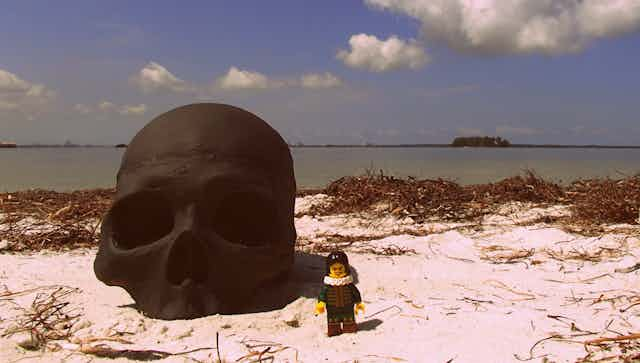It is easy to imagine from the recent headlines declaring a lost Shakespeare play to have been found that lovers of the Bard’s work are rejoicing.
The pantheon of great plays is now larger by one. Yet this is one occasion on which the phrase “don’t believe the headlines” may prove particularly apt. In April, two researchers from the University of Texas at Austin published an article in the online journal Psychological Science, outlining the use of a number of computational tests to determine whether William Shakespeare was the author of a play called Double Falsehood.
Headlines do, of course, stretch the truth, so it is important to start by pointing out that Ryan L. Boyd and James W. Pennebaker make no attempt to claim that they have “found” a lost play, as some headlines have proclaimed. As the authors point out from the start of their article, when Lewis Theobald published Double Falsehood in 1728, he claimed to have based this play on three manuscripts that were in his possession – all, he acknowledged, were by Shakespeare.
So there is no lost play that recent computer research has “found”. The play has been readily available for almost three centuries. The manuscripts were lost, though, apparently in a fire. Since the original Globe Theatre burned down in 1613, fire has been a particularly voracious destroyer of such manuscripts, and has been blamed on numerous occasions since for the loss of materials in Shakespeare’s own hand.
Before the conspiracy theorists raise a question of the convenience that Shakespeare’s works have been lost to fire, it is worth mentioning that the original manuscript of Robert Louis Stevenson’s The Strange Case of Dr. Jekyll and Mr. Hyde(1886) was deliberately destroyed by the author in his home fireplace, and fire was also responsible for the loss of the vast majority of the works of antiquity, housed as they were in the Library of Alexandria at the time that it was burned to the ground.
Whether there ever were any manuscripts cannot be known for sure, but their absence has prompted generations of scholars to ask if Theobald’s play could indeed have been based on Shakespearean originals. Enter Boyd and Pennebaker … and their computer.
Word sets
The research involved using computational analysis of word sets in Double Falsehood, which was then compared with the same analysis of all of the plays known to have been written by Theobald, by Shakespeare, and by John Fletcher – a playwright who collaborated with Shakespeare on two of the last plays he (or they) wrote and who therefore may also have had a hand in any other late play that we might want to attribute to Shakespeare.
Five types of word classes or categories were tested, each using three different computational methods (so there were 15 different tests for each play), and the results compared for tests on the five Acts of Double Falsehood (so, 75 different sets of results for comparison).
The results varied.
In 39 out of 45 tests on the first three Acts, Shakespeare comes out on top as the closest match. In the last two Acts, though, Shakespeare is closest on only 11 out of the 30 tests. Taking the play as a whole, their test seems to indicate that Shakespeare is by far the strongest candidate of the three, but the data is not always on the side of Shakespeare all of the time. In fact, only one test out of the 75 produces a 100% result – a “low-base-rate tells” test of Act 3 produces a 100% match to the same rates present in Theobald’s other plays.
So what does this research tell us?
As it currently stands, the answer is: nothing that scholars did not already strongly suspect. Have they proven these suspicions to be true? No. There are two unknowns in the research, each of which is trying to prove the other: on the one hand, the researchers want to identify the author of Double Falsehood; on the other, as they explain in their conclusion, they want to test whether computational methods are accurate in generating a “psychological signature” of an individual in his or her writing.
The problem here is that we cannot independently verify that the psychological signature they attribute to Shakespeare is in fact his — we simply don’t know enough about him outside of his writing.
Yet as the headlines reveal, there is a hunger in the wider public for the facts in the case of who wrote Shakespeare’s plays, so researchers need to tread carefully when suggesting that they have arrived at a solution.
Given the broad cultural significance of Shakespeare’s plays, it does matter that scholars treat the authorship question seriously. Boyd and Pennebaker’s research takes an each-way bet, proving nothing – but headline writers have twisted this bet into a very public double falsehood.

